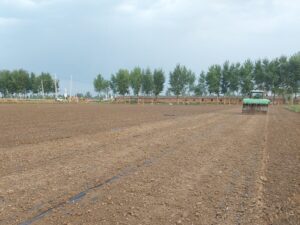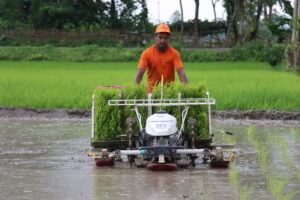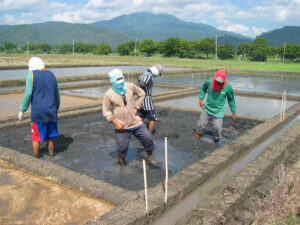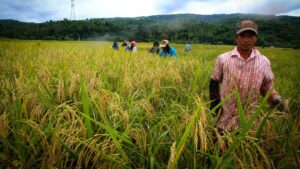 Bacterial blight of rice caused by Xanthomonasoryzae pv. oryzae (Xoo) is one of the most destructive diseases that affect rice-growing regions worldwide. The disease is virtually unstoppable once it occurs and farmers can suffer to 80% yield loss particularly if they are growing susceptible varieties and the environmental conditions are ideal for the disease to spread rapidly and widely.
Bacterial blight of rice caused by Xanthomonasoryzae pv. oryzae (Xoo) is one of the most destructive diseases that affect rice-growing regions worldwide. The disease is virtually unstoppable once it occurs and farmers can suffer to 80% yield loss particularly if they are growing susceptible varieties and the environmental conditions are ideal for the disease to spread rapidly and widely.
The disease is most likely to develop in areas that have weeds and stubbles of infected plants. It can occur in both tropical and temperate environments, particularly in irrigated and rainfed lowland areas. In general, the disease favors temperatures at 25−34°C, with relative humidity above 70%. Severe cases can occur in susceptible rice varieties under high nitrogen fertilization, according to the Rice Knowledge Bank.
Although there are chemical means developed to provide protection and control of this disease, such as the application of copper compounds or antibiotics, none of them are completely effective at eliminating outbreaks.
A genetic arms race
Planting rice varieties that carry genes that provide innate resistance mechanisms to overcome pathogenic infection has been proven to be the most efficient, most reliable, and cheapest way to control bacterial blight.
However, because the pathogen evolves into different strains very quickly, even resistant plants might become susceptible later. The emergence of new, more virulent races of Xoo has been observed with the intensification of rice monocultures. The extended deployment of rice cultivars with improved bacterial blight resistance over wide areas of cultivation also encouraged the co-evolution of the pathogen, resulting in the eventual breakdown of host plant resistance.
Critical to the success of this approach is the screening of various germplasm to identify sources of novel genetic loci regulating host-plant resistance, as well as the development of an efficient strategy to transfer target loci across genomes. To date, more than 40 genes/loci conferring resistance to bacterial blight have been identified in rice, although only 11 have been cloned and functionally characterized. In most cases, the introduction of a single resistance gene/locus into the genetic background of a susceptible cultivar significantly improved rice production and minimized yield losses in heavily infected regions.
To ensure an upper hand in the continuous evolutionary arms race between plant and pathogen, it is of paramount importance that novel sources of bacterial blight resistance are identified and incorporated into rice breeding programs aimed at improving this valuable target trait.
Harnessing wild genes
The wild relatives of rice (Oryza sativa) have long been recognized as a rich reservoir of novel genes underlying important agronomic traits, including resistance to a wide range of pests and diseases. In fact, of the more than 40 bacterial blight resistance genes/loci that have been identified from various germplasm, 10 were from wild rice species such as O. longistaminata, O. rufipogon, O. minuta, O. officinalis, O. nivara, O. australianesis, O. barthii, and O. glaberrima.
Now, another wild rice relative can be added to the list.
A new study published in PLoS ONE has shown that O.latifolia, native to South and Central America, to be a source of resistance to bacterial blight. The study reported the identification of a new locus from O. latifolia regulating the race-specific resistance to the Philippine Xoo race. This is the first known report of a bacterial blight resistance locus identified from O. latifolia.
The results of the study highlight the importance of wild rice relatives, as well as exotic germplasm generated from wild rice as sources of novel genetic variation to improve trait performance in the crop. The natural genetic variation found in wild Oryzaspecies is a product of strong selective pressures that allowed the evolution of adaptive mechanisms against a multitude of biotic and abiotic stresses.
More often than not, these mechanisms are exclusive only to wild rice and cannot be found in their cultivated counterparts.






Worth reading